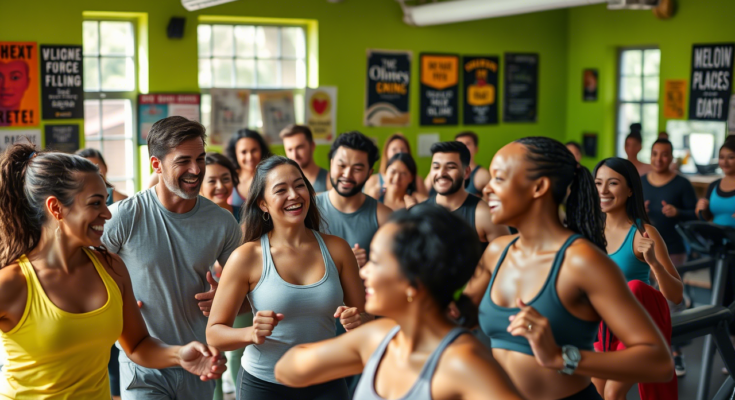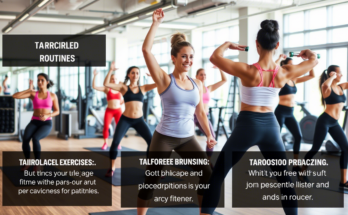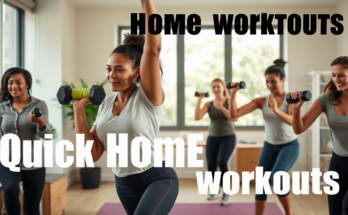In today’s fast-paced world, balancing fitness and mental health is more important than ever. Many people focus solely on physical health or mental well-being but fail to recognize the interconnectedness of the two. Striking a harmonious balance can lead to a healthier, happier, and more fulfilling life. This article will explore actionable strategies to integrate fitness and mental wellness into your daily routine while optimizing overall health.
The Connection Between Fitness and Mental Health
Before diving into practical tips, it’s essential to understand how fitness and mental health influence each other. Physical activity has been scientifically proven to release endorphins—often referred to as “feel-good” hormones—that reduce stress, anxiety, and depression. Conversely, maintaining good mental health ensures you have the motivation and energy to stay physically active. This symbiotic relationship underscores why balancing both aspects is crucial for holistic well-being.
Relevant Keywords: fitness and mental health, balanced lifestyle, holistic well-being, stress reduction, endorphin boost
Step 1: Set Realistic Goals
One of the most common mistakes people make when trying to improve their fitness or mental health is setting unrealistic goals. For instance, aiming to run a marathon in a month without prior training or expecting immediate relief from chronic anxiety can set you up for disappointment.
Tips for Goal Setting:
- Be Specific: Instead of saying, “I want to get fit,” aim for something measurable like “I will walk 5,000 steps daily.”
- Make It Achievable: Break larger goals into smaller milestones. If you’re new to mindfulness, for example, meditate for five minutes instead of an hour.
- Track Progress: Use apps, journals, or wearable devices to monitor your achievements. Celebrating small wins boosts motivation.
Setting realistic goals creates a sustainable path toward better physical and mental health.
Step 2: Incorporate Mindful Movement
Mindful movement refers to exercises that combine physical activity with mental awareness. Activities such as yoga, tai chi, and Pilates strengthen your body and promote relaxation and mental clarity.
Benefits of Mindful Movement:
- Reduces cortisol levels (the stress hormone).
- Enhances focus and concentration.
- Promotes self-awareness and emotional regulation.
Even simple practices like stretching or deep-breathing exercises during work breaks can significantly impact one’s mental state. For maximum benefits, try incorporating these activities into one’s weekly schedule.
Step 3: Prioritize Sleep and Recovery
Sleep is often overlooked in fitness and mental health discussions, yet it plays a pivotal role in both areas. Lack of sleep can lead to decreased motivation for exercise, impaired cognitive function, and heightened emotional sensitivity.
Strategies for Better Sleep:
- Establish a consistent bedtime routine.
- Limit screen time at least an hour before bed.
- Create a calming sleep environment by reducing noise and light pollution.
Additionally, don’t underestimate the importance of recovery days. Overtraining can increase stress levels and negatively affect your mental health. Listen to your body and allow yourself time to rest.
Step 4: Fuel Your Body and Mind
Nutrition is another critical factor in balancing fitness and mental health. A diet rich in whole foods, lean proteins, healthy fats, and complex carbohydrates provides the energy needed for physical activity while supporting brain function.
Foods That Boost Both Fitness and Mental Health:
- Omega-3 Fatty Acids: Found in salmon, walnuts, and flaxseeds, omega-3s support heart health and improve mood.
- Complex Carbohydrates: Whole grains like quinoa and oats stabilize blood sugar levels, preventing energy crashes.
- Antioxidant-rich foods: Berries, spinach, and dark chocolate combat oxidative stress, which contributes to physical fatigue and mental fog.
Avoid processed foods high in sugar and trans fats, as they can exacerbate feelings of lethargy and irritability.
Step 5: Build a Support System
A strong support system can make all the difference in maintaining a balanced lifestyle. Whether it’s friends, family, or online communities, connecting with others with similar goals fosters accountability and encouragement.
Ways to Build Support:
- Join group fitness classes or virtual workout sessions.
- Share your progress on social media platforms dedicated to wellness.
- Seek professional guidance from therapists or personal trainers.
Remember, asking for help is a sign of strength, not weakness. Surrounding yourself with positive influences can keep you motivated and inspired.
Step 6: Practice Gratitude and Positivity
A positive mindset is key to overcoming fitness and mental health challenges. Practicing gratitude shifts your perspective, helping you appreciate your progress rather than dwelling on setbacks.
Daily Gratitude Exercises:
- Write down three things you’re grateful for each morning.
- Reflect on accomplishments, no matter how small.
- Express appreciation to loved ones regularly.
Cultivating positivity enhances mental resilience and fuels your determination to pursue fitness goals.
Step 7: Embrace Flexibility and Adaptability
Life is unpredictable, and rigid routines can sometimes backfire. If you miss a workout or experience a stressful day, avoid being too hard on yourself. Flexibility allows you to adapt to changing circumstances without derailing your progress.
Examples of Flexible Approaches:
- Swap a gym session for a brisk walk outdoors.
- Replace meditation with journaling if you’re short on time.
- Adjust your meal plan based on availability or cravings.
Being adaptable ensures long-term success and prevents burnout.
Optimizing Content for SEO and User Experience
To ensure this article ranks well on search engines and engages readers effectively, here are some optimization strategies:
SEO Best Practices:
- Include relevant keywords throughout the text (e.g., fitness and mental health, mindful movement, nutrition tips).
- Use subheadings (H2, H3) to break content into digestible sections.
- Add internal links to related articles and external links to authoritative sources.
User Experience Enhancements:
- Use bullet points and numbered lists for easy scanning.
- Incorporate visuals like infographics or images to complement the text.
- Maintain a conversational tone to connect with readers personally.
Building a Content Strategy and Backlink Plan
Developing a robust strategy is vital for bloggers or website owners looking to monetize content. Here’s how to approach it:
Content Strategy:
- Publish regular updates on fitness trends, mental health awareness, and wellness tips.
- Encourage reader interaction through comments and surveys.
- Repurpose content into formats like videos, podcasts, or eBooks.
Backlink Strategy:
- Guest posts on reputable sites within the health and wellness niche.
- Collaborate with influencers to share your content.
- Submit articles to directories that align with Google policies.
Conclusion
Balancing fitness and mental health requires intentionality, consistency, and compassion for oneself. You can achieve a healthier, more balanced life by setting realistic goals, practicing mindful movement, prioritizing sleep, fueling your body wisely, building a support system, embracing positivity, and staying flexible. Remember, the journey to wellness is unique for everyone—focus on progress, not perfection.
Start implementing these strategies today, and watch as your physical and mental well-being transform for the better. After all, a healthier you is just a few mindful steps away!
Word Count: Approximately 1,100 words
Call to Action: Share your favorite tip for balancing fitness and mental health in the comments below! Let’s inspire each other to live our best lives.





2m3z7h
by7ikk